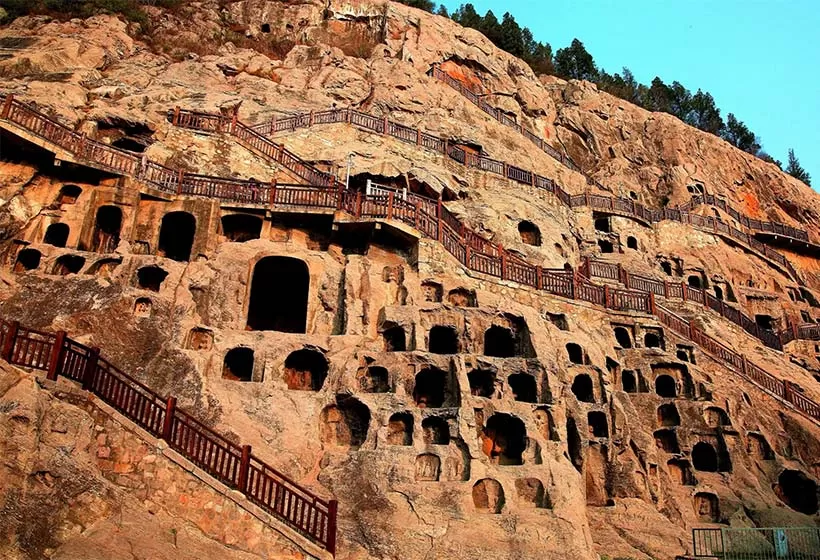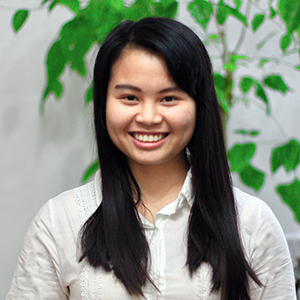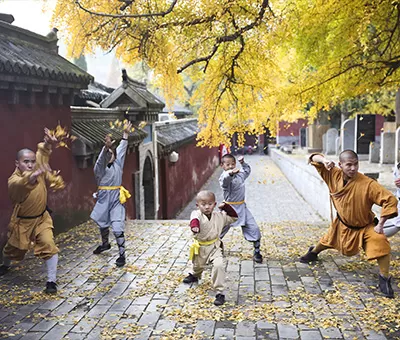Longmen Grottoes
Longmen Grottoes serve as the second name card of Luoyang, the first being peony.
Longmen is a place scattered with enticing landscapes: two mountains confronting each other tower in its east and west and the Yishui River trickles northwards. From a distance, it resembles a natural gate and was called “Yishui River entrance gate” in the past. The entrance gate has long been the first scenery that visitors encounter there.
Longmen Grottoes was initially excavated around 494 AD, the time when Emperor Xiaowen of the Northern Wei Dynasty relocated the capital to Luoyang. Afterwards, the excavation of grottoes lasted for over 400 years. The excavation didn’t stop in the Eastern Wei, Western Wei, Northern Qi and Northern Zhou Dynasties. A large number of grottoes were further excavated in the Sui, Tang and Song Dynasties. The grottoes scatter the precipitous cliffs of the two mountains towering in the eastern and western sides of the Yishui River, extending as long as 1 kilometer and housing more than 97,000 Buddhist statues, where the largest is as tall as 17.44 meters while the smallest being 2 meters tall.
The precipice of the western hill is covered by over 50 large and medium size grottoes that were excavated in Northern, Sui and Tang Dynasties. Guyang Grotto, Binyang Zhong Grotto, Lianhua Grotto, Huangfu Gong Grotto, Weizi Grotto, Putai Grotto, Huoshao Grotto, Cixiang Grotto and Lu Grotto are representative grottoes of the Northern Wei Dynasty; Cixi Temple, Binyang Nan Grotto and Binyang Bei Grotto (the excavation of these two grottoes and the decoration of their tops were finalized in the Northern Wei Dynasty and the carving of the statues was completed in the Sui and Tang Dynasties), Jingshan Temple, Moya Sanfo Shrine, Thousand Buddha Grotto, Huijian Grotto, Fengxian Temple, Jingtu Hall, Longhua Temple and Jinan Grotto are the representative grottoes of the Tang Dynasty. The Eastern Hill is covered by over 30 large and medium-sized grottoes that were excavated in the Tang Dynasty, including Erlianhua Grotto, Kanjing Teple Grotto, Dawan Wufo Grotto (also known as Leigutai Three Grottoes) and Gaoping Junwang Grotto, etc.
An introduction to Major Grottoes
Fengxian Temple
Located in the southern region of Western Hill, Fengxian Temple was initiated by Emperor Gaozong of the Tang Dynasty. Among all grottoes, it’s the largest and most representative carving artwork of the Tang Dynasty. The temple houses total 9 statues, including a statue of Buddha, two statues of his disciples, two statues of Bodhisattva and two statues of Giant Guardians. The 17.14-meter-tall Locana Buddha Statue is the center and largest statue in the grotto.
Guyang Grotto
Located in the middle of the southern region of the Western Hill, the grand Guyang Grotto is the earliest-excavated grotto that houses the largest number of items. It was excavated in 493 AD or even earlier, the grotto, being its top or other sites, is studded with shrines of various sizes and various shapes. The giant shrines placed in its eastern and western walls are arranged in three rows. Also, most of the shrines are carved with names of excavators in Chinese characters. As over 800 shrines are carved with names of excavators, Guyang Grotto is known as the grotto that houses the largest number of shrines of its kind.
Yaofang (Prescription) Grotto
Located in the south of the Western Hill, the grotto is named Yaofang (Prescription) Grotto in that ancient prescriptions are carved there. The excavation of Yaofang Grotto was initiated in the late Northern Wei Dynasty and lasted in both the Eastern Wei and Northern Qi Dynasties. The early Tang Dynasty witnessed the excavation of the grotto. In Longmen, it is the only large-scale grotto that features the architectural style of the Northern Qi Dynasty.
Xiangshan Temple
In the middle of Eastern Hill, Xiangshan Temple was originally built in the first year of Emperor Xiaoming of the Northern Wei Dynasty (516 AD). It has antique beauty and surrounded by green pines and verdant cypresses. In the 6th year during the reign of Emperor Wenzong of the Tang Dynasty (832 AD), Bai Juyi (a famous Chinese poet) donated money, he earned from revising the epitaph that he composed his close friend, Yuan Zhen, for the renovation of the temple. In addition, he composed an article that recorded this donation. His arrival at the temple as a renowned figure contributed to the rising fame of the temple. What’s more, he compiled the 800 poems he composed in Luoyang in the past 12 years into 10 volumes entitled The Selected Poems of Bai Juyi Composed in Luoyang, and placed them in the Sutra Depository of the temple. As he has long lived in the temple, he would call himself “resident of Xiangshan Temple.” His family buried him there after his death.
GREAT FAMILY CHINA TOUR
JULY 2024 We wanted to thank Grace at China Culture tour for organizing a great tour of China. We enjoyed our Beijing - Xian-Chengdu -Guilin -Yangshuo - Shanghai trip. Our local guides Bruce in Beijing, Susan in Xian, Jane in Chengdu, Mike in Guilin and Mary in Shanghai took care of us…read more details »
Teng Han L from SINGAPORE
Ready to Create a Unique Dream Travel?


